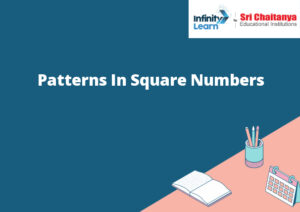Table of Contents
Number Patterns
Mathematics is the study of quantity, structure, space, and change. Quantity is the property of objects that can be measured. Structure is the property of objects that can be described by their arrangement or relation to other objects. Space is the property of objects that can be located in relation to other objects. Change is the property of objects that vary over time.
One of the most basic concepts in mathematics is that of number pattern. A number pattern is a sequence of numbers in
Introduction to Number Patterns
A number pattern is a sequence of numbers that follow a specific rule. There are many different types of number patterns, including Fibonacci sequences, Pascal’s triangle, and the golden ratio.
One common type of number pattern is the Fibonacci sequence. The Fibonacci sequence is named after Leonardo Fibonacci, who discovered it in the thirteenth century. The Fibonacci sequence is a sequence of numbers in which each number is the sum of the previous two numbers
How do Number Patterns Work?
In mathematics, number patterns are sequences of numbers that follow a specific rule. There are many different types of number patterns, and they can be found in a variety of places, including in nature, in mathematics, and in everyday life. Some number patterns are easy to spot, while others are more difficult to find.
One of the most commonly seen number patterns is the Fibonacci sequence. This sequence is named after Leonardo Fibonacci, who was an Italian mathematician who lived in
Types of Number Patterns
There are many types of number patterns. Some are easier to spot than others.
- One type of number pattern is the Fibonacci sequence.
- This sequence is named after Leonardo Fibonacci, who was a mathematician from the thirteenth century.
- The Fibonacci sequence is a series of numbers where each number is the sum of the previous two numbers.
- first two numbers in the sequence are 0 and 1, and the next number is 1. Then the next number
Arithmetic Sequence
An arithmetic sequence is a sequence of numbers in which each term is obtained by adding a fixed number, called the common difference, to the preceding term.
The first five terms of an arithmetic sequence are 4, 7, 10, 13, 16.
The common difference is 3.
Geometric Sequences
A geometric sequence is a sequence of numbers in which each term is obtained by multiplying the previous term by a fixed number. The most common example of a geometric sequence is the sequence of Fibonacci numbers, in which each term is the sum of the previous two terms.
The Fibonacci sequence can be written as the following equation:
F n = F n-1 + F n-2
where F 0 = 0 and F 1 = 1.
Square Numbers
Square numbers are numbers that the product of a number multiplied by itself. The first few square numbers are 1, 4, 9, 16, 25, 36, 49, 64, 81, 100.
Square numbers are important in mathematics because they are the building blocks for other mathematical concepts. For example, the square root of a number is the number that, when multiplied by itself, yields the original number. This is why square numbers also called perfect squares.

Cube Numbers
A cube number is a number that is the result of multiplying a number by itself twice. For example, the cube number of 8 is 8x8x8=512. The cube number of 1 is 1x1x1=1.
There are only a few cube numbers that are less than 10. They are 1, 8, 27, 64, 125, 216, 343, 512.
There are many more cube numbers that are greater than 10. They are
Triangular Numbers
A triangular number is a number that can represented by dots arranged in a triangular pattern. The first few triangular numbers are 1, 3, 6, 10, 15, 21, and 28.
The triangular number pattern can extended to infinity. In fact, the sum of the first n triangular numbers is n(n+1)/2. For example, the sum of the first 7 triangular numbers is 7(7+1)/2 = 49.
There are a
Fibonacci Numbers
What are Fibonacci numbers?
The Fibonacci numbers a sequence of numbers named after Leonardo Fibonacci, who introduced the sequence to European mathematics in the 13th century. Fibonacci numbers generated by adding the two previous numbers in the sequence together. So the first two Fibonacci numbers are 0 and 1, the next two are 1 and 2, and so on. The Fibonacci sequence is 0, 1, 1, 2, 3, 5









